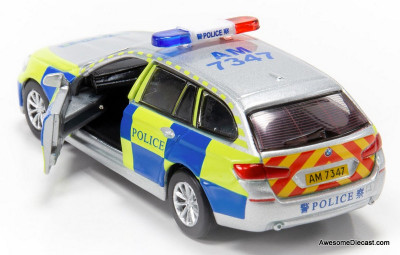The BMW i3 is a B-class, high-roof hatchback manufactured and marketed by BMW with an electric powertrain using rear wheel drive via a single-speed transmission and an underfloor Li-ion battery pack and an optional range-extending gasoline engine. The i3 was BMW's first mass-produced zero emissions vehicle and was launched as part of BMW's electric vehicle BMW i sub-brand.
Styled by Richard Kim, the i3 uses a single five-door configuration with bodywork consisting of a passenger module of high strength, ultra-lightweight CFRP (carbon fiber reinforced plastic) glued to a lower aluminium module holding the chassis, battery, drive system and powertrain. The bodywork features two smaller clamshell rear-hinged rear doors. The i3 debuted as a concept at the 2011 International Motor Show Germany, and production began in July 2013 in Leipzig, Germany.
The i3 ranked third among all-electric cars sold worldwide from 2014 to 2016. Global sales since inception totaled more than 133,000 units through the end of 2018. The U.S. is its best-selling market with over 37,000 units sold through 2018.
The BMW i3 has won two World Car of the Year Awards, selected as 2014 World Green Car of the Year and also as 2014 World Car Design of the Year. The i3 received an iF Product Design Gold Award, and won both UK Car of the Year 2014 and Best Supermini of 2014 in the first UK Car of the Year Awards.
It is reported that BMW has no plan for an i3 successor, as the company plans electrification of more models.
In February 2011, BMW debuted its sub-brand, BMW i, to market the vehicles produced under Project i. BMW i vehicles were to be sold separately from BMW or Mini. The first two production models are the all-electric BMW i3, formerly called the Mega City Vehicle (MCV), and a plug-in hybrid called BMW i8, which is the production version of the Vision Efficient Dynamics concept unveiled at the 2009 International Motor Show Germany and has an all-electric range of 50 kilometres (31 mi). Production of both plug-in electric cars was scheduled to start in Leipzig in 2013.
The i3 concept car was unveiled at the 2011 International Motor Show Germany. BMW showcased a BMW i3 prototype during the 2012 Summer Olympics in London, and the production version was unveiled in July 2013.
BMW unveiled the i3 Concept Coupé study at the 2012 Los Angeles Auto Show. The carmaker developed the concept car to demonstrate the potential for extending the model range. The three-door hatchback coupe, like the five-door i3 electric hatchback sedan, is propelled by an electric motor developed by the BMW Group, with a maximum output of 125 kW (168 hp) and peak torque of 250 N·m (184 lb-ft). Power delivery to the rear wheels is via a single-speed transmission. The li-ion battery pack is placed under the floor and can deliver an all-electric range of 160 km (99 mi), but a gasoline engine referred to as "REx", can be added to extend the car's range to 320 km (200 mi).
The i3 was the first mass production car with most of its internal structure and body made of carbon-fiber reinforced plastic (CFRP). BMW took advantage of the absence of a forward internal combustion engine, giving the i3 a "clean sheet design" with a sports-like appearance. The i3 has door panels made of hemp, which mixed with plastic helps lower the weight of each panel by about 10%. Hemp fibers, left exposed, also form a design element of the car's interior and contribute to sustainability. Further environmental consciousness is reflected in the optional seat leather, which is tanned with olive-leaf extract and the dashboard trim, which is made from environmentally refined wood from certified cultivation in Europe. By November 2010, BMW had demonstrated the passenger compartment's light weight, and the automaker's chief executive said they had already decided on the basic design of the car and that road-testing prototypes began soon after.
The i3 includes four doors and seating for four occupants with rear suicide doors. The i3 uses a newly developed powertrain consisting of a 130-kilowatt (170 hp) electric motor running on lithium-ion batteries and driving the rear axle. BMW aimed to achieve a range of 160 km (100 mi), the same range that was expected for the BMW ActiveE, but in order to reduce weight with a battery capacity of 16 kWh instead of the ActiveE's 30 kWh.
The BMW i3 has two pedals like all cars with automatic transmission. The accelerator pedal acts as both accelerator and engine brake. When the driver releases the pedal, the vehicle's kinetic energy is regenerated by the vehicle drivetrain to recharge the battery. This has the effect of slowing the car down. During the field testing of the Mini E, which has an accelerator that recharges the battery in this way, and consists of brakes that only apply to the rear wheels, BMW has learned that drivers tend to rely on the engine brake: around 75% of all deceleration maneuvers are initiated without the brake pedal in urban traffic areas. BMW also expected the i3 to use the same type of battery and powertrain that is being tested in the BMW ActiveE trials.
The prototype presented at the 2011 International Motor Show Germany had a 22 kWh (79 MJ) lithium-ion battery pack that is expected to deliver between 130 to 160 km (80 to 100 mi) and the battery was fully charged in about four hours with the 240-volt charging unit. The i3 was expected to go from 0 to 100 km/h (0 to 62 mph) in less than 8 seconds. The BMW i3 has a 130 kW (170 hp) electric motor mounted on the rear axle to drive the rear wheels and the top speed is limited to 150 km/h (93 mph).
BMW designed the i3 eDrive powertrain based on the premise that the battery would need to be recharged only once every two to three days. The charging frequency was derived from field trial results taken from the BMW ActiveE and MINI E vehicles in Asia, Europe and the U.S., whereby the typical commuting use between the pilot users' homes and workplaces was calculated.
In June 2012 an updated version of the BMW i3 concept car was unveiled at the opening of the first BMW i store, located on Park Lane in London, UK. The updated i3 concept consists of a new interior colour and materials concept. The seat covers combine responsibly sourced wool and leather naturally tanned with an olive oil leaf-based agent. The almost symmetrical curving dash is inlaid with treated eucalyptus wood that, according to BMW, is sourced from sustainably managed European forests.
Information is provided to the driver through a 16.5 cm (6.5 in) freestanding instrument cluster and a 22.3 cm (8.8 in) central information display. The bench-derived front seats replace the center tunnel that bisected the cabin and a floor-mounted transmission, brake levers or center console are also absent.
The i3 allows the owner to charge the battery from a conventional socket. The BMW i3 has a number of charging functions. With the original 60Ah battery, AC fast charging can take less than 3 hours with the use of the BMW i Wallbox Pure or any 3rd party charging equipment (EVSE) supporting 32A, when charging from 0 to 80%. The i3 also has a rapid charging option suitable for public DC charging stations and can take less than 30 minutes to charge the 60Ah version from 0% to 80%. Later 94Ah and 120Ah models take proportionally longer. In the US, it can also be charged from any public charging station with an SAE J1772 connector. In 2016, BMW and the PG&E utility in California expanded an experiment of delaying charge-up during peak demand and compensating i3 owners for the delay.




















